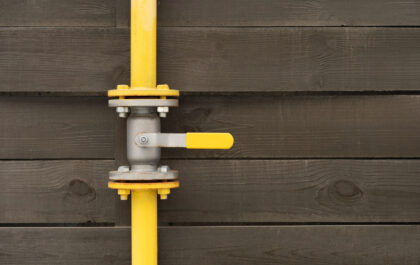1. The Tub Swap: Why Bother?
Let’s face it—your bathtub has seen better days. Maybe it’s chipped, faded, or just plain out of style (hello, avocado green!). But how much does it cost to replace a tub, and is it worth the hassle? Whether you’re dreaming of spa nights or want to boost your home’s value, replacing your tub can be a game-changer. Before you grab a sledgehammer or your credit card, let’s dive into the nitty-gritty details.
Bathtub replacement isn’t just about picking a pretty new tub. It’s about comfort, functionality, and, yes, keeping your rubber ducky happy. The good news? With the right contractor and a little know-how, you can transform your bathroom without draining your bank account.
So, why bother? Because nothing says “I love myself” like a hot bath in a shiny new tub. Plus, it might just be the upgrade your bathroom (and your mood) desperately needs.
2. Breaking Down Bathtub Replacement Costs
The big question: What’s the real cost to replace a tub? The answer isn’t one-size-fits-all. On average, replacing a tub ranges from $1,200 to $5,000, depending on the tub type, installation complexity, and local labor rates.
Fiberglass tubs are the budget-friendly option, while cast-iron and whirlpool tubs can send your wallet into a cold sweat. Don’t forget: labor costs, plumbing adjustments, and potential repairs can all add to the final bill. And let’s not ignore the sneaky costs—like removing that stubborn old tub or fixing water damage hiding beneath.
It’s wise to get multiple quotes from local contractors, compare prices, and ask for a detailed breakdown. That way, you’ll know where each dollar is going—and where you can save a few bucks.
3. Types of Tubs: From Basic to Bougie
Bathtubs come in all shapes, sizes, and price tags. There’s the classic alcove tub, the luxurious freestanding option, and the ever-popular walk-in tub for the ultimate in relaxation.
Alcove tubs are generally the most affordable, with prices starting around $300 for materials. Drop-in and freestanding tubs crank up the style (and the cost), while walk-in tubs are perfect for accessibility—but can easily top $3,000.
When choosing a tub, think about your lifestyle. Is this a quick-soak zone, a kid-friendly splash pad, or your new personal sanctuary? Your answer will guide your choice—and your budget.
4. Labor: Where the Magic (and Money) Happens
Now, let’s talk about labor—the unsung hero (or villain) of any remodel. Professional installation typically costs between $500 and $1,500, depending on complexity and region.
Why so much? Because replacing a tub isn’t just about hauling out the old and dropping in the new. Contractors may need to adjust plumbing, reinforce flooring, or even replace wall tiles. The more complicated your project, the higher the labor costs.
Want to save? Schedule a consultation, get clear quotes, and ask if there are ways to minimize extra work. It’s amazing how a little planning can keep your costs from overflowing.
5. Hidden Surprises: What’s Lurking Under Your Old Tub?
Here’s where things get interesting. Old tubs can hide all sorts of surprises—like water damage, mold, or outdated plumbing. Unfortunately, addressing these issues can add hundreds, if not thousands, to your final bill.
Before installation begins, ask your contractor about what happens if they find damage. Will they fix it? Will it cost extra? Knowing what to expect can help you avoid a financial splashdown mid-project.
If you want to play it safe, set aside a contingency budget. Think of it as a “just in case my bathroom is secretly a disaster” fund.
6. DIY vs. Pro: Should You Replace Your Tub Yourself?
YouTube makes everything look easy, including bathtub replacement. But unless you moonlight as a plumber, replacing a tub is best left to the pros.
DIYers might save on labor, but the risk of water leaks, improper installation, or accidental property damage is real. Plus, nothing ruins a Saturday like realizing your new tub doesn’t fit through the door.
Save yourself the headache (and the plumber’s emergency fee) by hiring a vetted, local contractor who knows bathtubs inside and out.
7. Materials Matter: Picking the Right Tub for Your Budget
Not all tubs are created equal. Acrylic tubs are lightweight and affordable. Cast-iron? Heavy, durable, and oh-so-classic. Porcelain-enameled steel falls somewhere in between.
Fiberglass tubs are the budget pick, but they scratch more easily. If you’re in it for the long haul, consider investing in a sturdier material. Your future self (and your plumber) will thank you.
Ultimately, the best tub for your budget is the one that balances durability, style, and price.
8. Permits, Plumbing, and Prep Work
Surprise: sometimes you need a permit to replace a tub, especially if you’re changing the layout or making major plumbing adjustments. Permit fees vary by city, so check local regulations before you start.
Plumbing work isn’t glamorous, but it’s crucial. Outdated pipes can cause leaks or water pressure issues down the road. A good contractor will inspect your plumbing and let you know if anything needs an upgrade.
Finally, prep work—like removing old tile or reinforcing floors—can add to your timeline and budget. Ask your contractor for a detailed scope before work begins.
9. Cut the Cost of Replacing Without Cutting Corners
Replacing a tub doesn’t have to mean emptying your piggy bank. Compare contractor quotes, choose materials wisely, and ask about package deals on labor and supplies.
You can also save by keeping your existing tub footprint, minimizing plumbing changes, or shopping for tubs during sales. And hey—reading reviews before hiring a contractor can save you from a world of regret.
A little research goes a long way when it comes to saving money without sacrificing quality.
10. Ready for a Tub Upgrade? Take the Plunge!
If you’ve made it this far, you’re more than ready to tackle your bathtub replacement project. Remember: the cost to replace a tub depends on materials, labor, and those pesky surprises lurking behind your walls.
By comparing prices, reading reviews, and working with trusted local professionals, you can enjoy a new tub without getting soaked by unexpected costs. So, go ahead—take the plunge and give your bathroom (and your mood) a fresh start!





